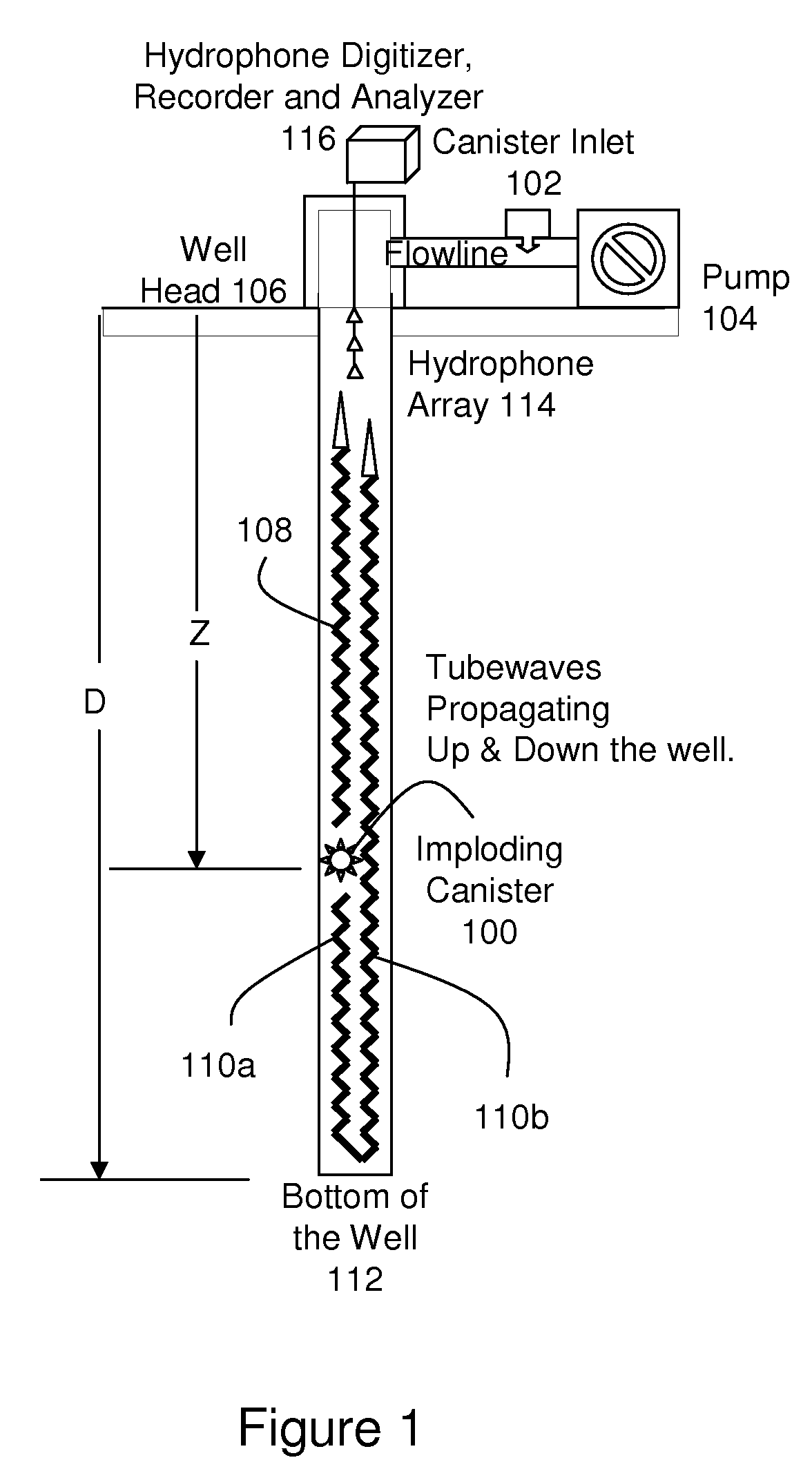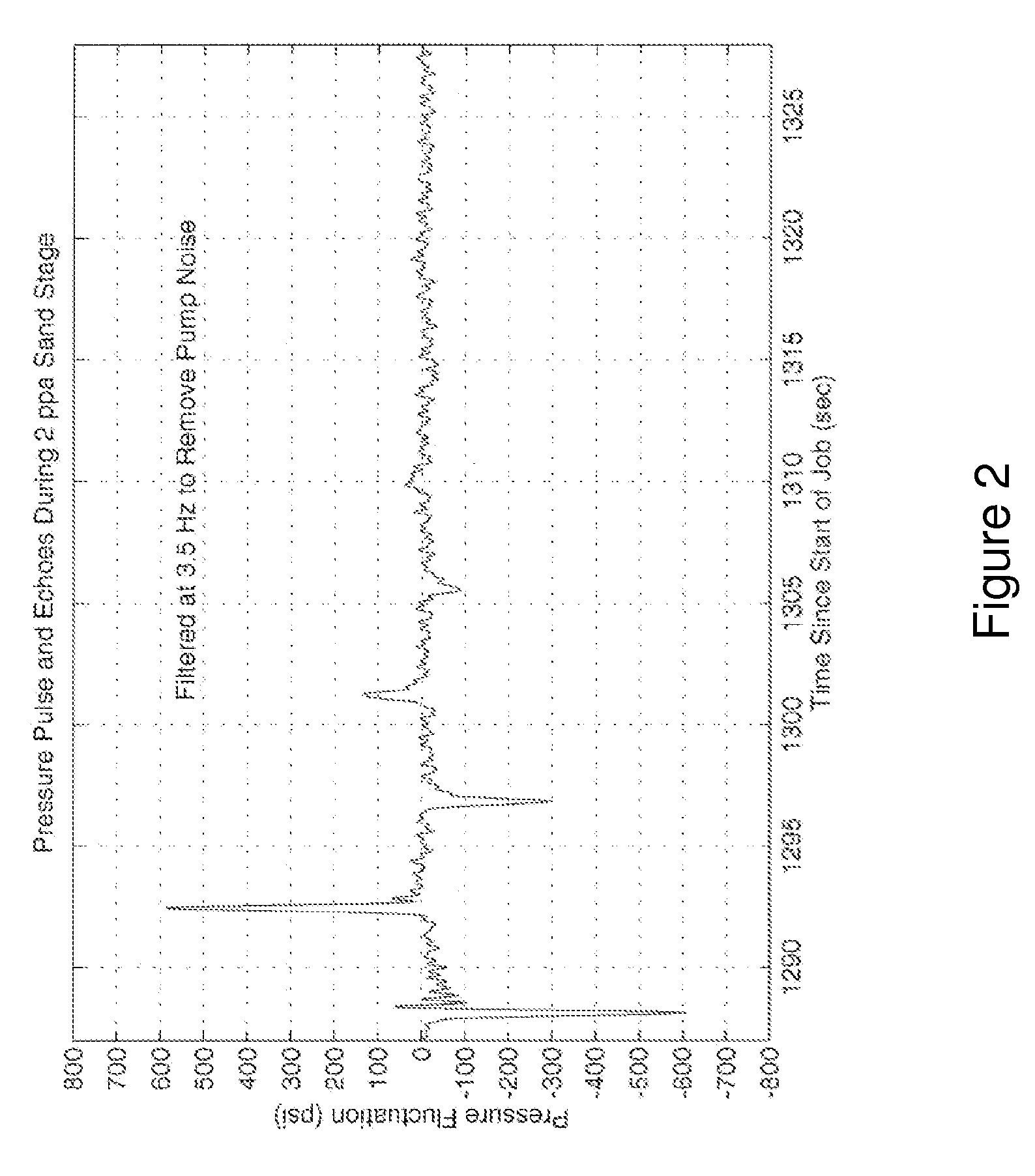Determination of downhole pressure while pumping
a technology of downhole pressure and pumping, which is applied in the field of measuring downhole pressure, can solve the problems of inability to enable real-time decision, technique impractical for many wells, and rarely performed real-time measurements of bottom hole pressure with current technology, and achieve the effect of facilitating the calculation of depth
- Summary
- Abstract
- Description
- Claims
- Application Information
AI Technical Summary
Benefits of technology
Problems solved by technology
Method used
Image
Examples
Embodiment Construction
[0015]FIG. 1 illustrates use of an imploding canister (100) in a borehole to determine a pressure-depth relationship along the length of the borehole. The canister is introduced into the fluid being pumped into the borehole via an inlet (102) between the pump (104) and the borehole head (106). The canister (100) is designed to implode when the pressure to which it is subjected exceeds a predetermined implosion value, e.g., 300 PSI. Once introduced into the fluid, the canister is carried down the borehole by at least one of (a) the fluid being pumped and (b) the force of gravity. When the pressure to which the canister is subjected exceeds the implosion value, e.g., 300 PSI, the canister implodes. The implosion of the canister generates strong tubewaves (108, 110) which travel both up and down the well, i.e., an up-going tubewave (108) and a down-going tube wave (110a). The up-going tubewave (108) propagates upward through the borehole to the borehole head (106) at the surface. The d...
PUM
 Login to View More
Login to View More Abstract
Description
Claims
Application Information
 Login to View More
Login to View More - R&D
- Intellectual Property
- Life Sciences
- Materials
- Tech Scout
- Unparalleled Data Quality
- Higher Quality Content
- 60% Fewer Hallucinations
Browse by: Latest US Patents, China's latest patents, Technical Efficacy Thesaurus, Application Domain, Technology Topic, Popular Technical Reports.
© 2025 PatSnap. All rights reserved.Legal|Privacy policy|Modern Slavery Act Transparency Statement|Sitemap|About US| Contact US: help@patsnap.com



